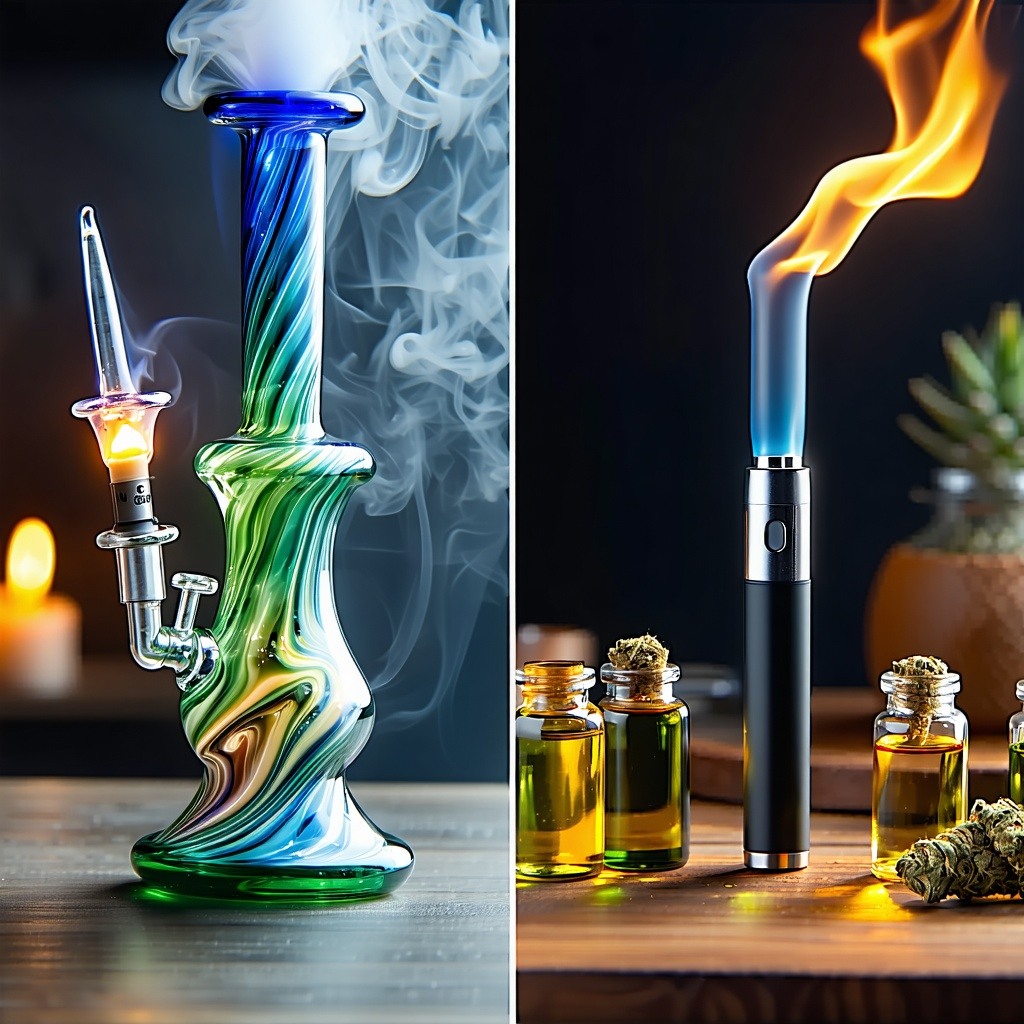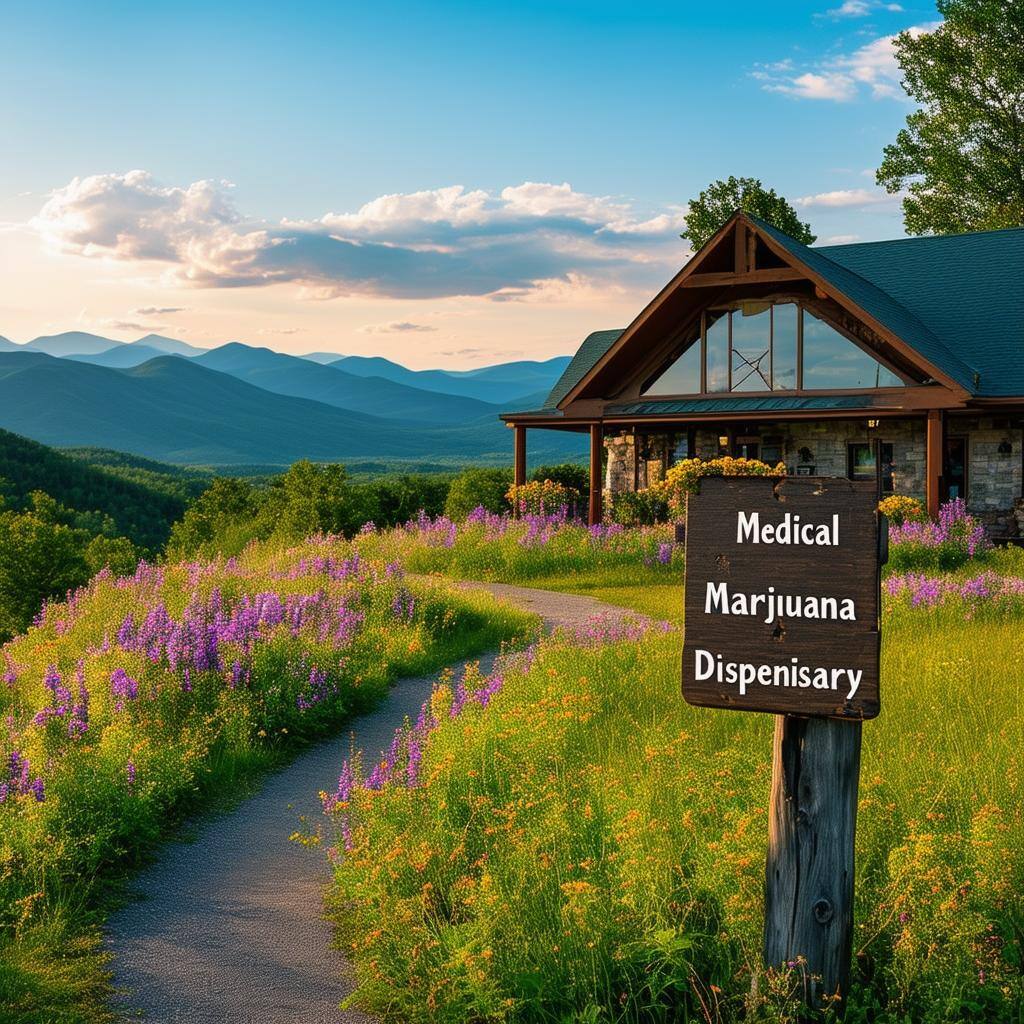Dabbing vs. Vaping: The Best Way to Consume Medical Marijuana
Medical marijuana patients have more options than ever for consuming their medicine, with dabbing and vaping standing out as two of the most popular...

Blog Originally posted https://www.thecut.com/2019/09/are-weed-pens-as-dangerous-as-vaping-nicotine.html
It has been challenging, to say the least, to determine exactly how worried we should be about the phenomenon experts are now calling VAPI (vaping-associated pulmonary illness). It so far has been attributed to thirteen deaths and 805 confirmed and probable cases in the United States. Most news coverage — and legislative response — has focused on nicotine products like Juul, whose CEO recently stepped down amidst these public health concerns, replaced by an executive at Altria, a cigarette empire. Walmart, which will continue to sell cigarettes (and guns), has announced plans to stop selling e-cigarettes, and several states have banned them outright.
But among the cases confirmed by the CDC thus far, most were attributed to the use of THC cartridges, many of which were purchased on the black market. (Many, if not most, of the cases reported involved patients who used both nicotine and THC, sometimes self-mixed.) Annoyingly, when we say “vaping,” we could be referring to the use of either e-cigarettes or cannabis, thereby conflating the two. As a result, I think, the weed-related part of this story has flown under the radar pretty much everywhere, except cannabis-specific sites like Leafly.
Many marijuana advocacy organizations have warned consumers not to buy THC vape products from unlicensed retailers, but is that really enough? The Cut spoke to a range of experts who study and work with cannabis to determine best practices for cannabis users both casual and frequent in this period of vape-related uncertainty.
Are we overreacting?
Depends who you ask. Andrew Hathaway, an associate professor of sociology at the University of Guelph in Canada, says it’s reasonable for people (i.e., vapers) to be skeptical about the amount of attention being paid to VAPI. “Not to diminish the tragedy, but when you see this panic [as a result of fewer than] a dozen deaths in a country of 300 million people, that has the markings of a moral panic,” he says. “I think there is some cause to be cynical about that.”
Stephen Bright, a senior lecturer on addiction at Edith Cowan University in Australia who specializes in harm reduction, worries that reactive vaping legislation might have unintended consequences. “When there’s a moral panic, governments need to be seen as responding in some way because people are concerned, and when they react very quickly, often what they’re doing isn’t evidence-based, and it can have unintended negative effects,” he says. In his own research on the Australian government’s reaction to synthetic cannabis products, Bright found that banning products outright sometimes resulted in newer, less-understood psychoactive products entering the market. He likens the outright ban like those increasingly seen in the U.S. as using “a sledgehammer on a nail.” A more effective approach is to apply stringent regulations, says Bright.
Are weed pens as dangerous as vaping nicotine?
In short — yes, potentially. Vaping THC oil has become a popular alternative to smoking weed in recent years, largely due to the product’s convenience, lack of odor, and potency. Just as Juul likely captured segments of the otherwise non-smoking market, weed pens are especially attractive to marijuana newcomers. “It gave people who weren’t your committed chronic pot smokers — your soccer moms, your grandmas — a way to enjoy the benefits of cannabis consumption without the fear of smoke-related harm,” says Hathaway. And much like Juul has been promoted as being inherently safer than smoking cigarettes, advertising for liquid cannabis cartridges tends to promote their ability to deliver a “cleaner” high.
But liquid cannabis cartridges are a relatively new and unstudied product, and their regulation criteria are irregular state to state. Though most of the cartridges identified by the CDC have been purchased illegally (many under the brand name “Dank Vapes”), doctors working in medicinal cannabis express concerns about legal cartridges as well. Erick Kaufman is a cannabis doctor working in Oklahoma, where legal medical marijuana is less than a year old. “In Oklahoma, all you have to have is $2500 and be 25 years of age, and you can get a license to open your own dispensary,” he says. “We have over a thousand dispensaries. A lot of the people who’ve gotten into this business are people who were slinging weed illegally in the past and are now doing it legally, and they can source their product from anybody that they want.”
Kaufman worries that lax regulation will allow sellers to prioritize profit over safety, particular in vaping products. “Getting THC distillate is not hard at all,” he says. “It’s relatively inexpensive to do a hydrocarbon extraction for THC, and there’s such a profit to be made that I think it’s the Wild Wild West.”
To be clear, Kaufman’s concern is not for the THC itself, but what it’s mixed with. Vitamin E acetate, commonly used as a thickening agent with THC oil on the black market, has been highlighted as a common denominator among a number of VAPI cases. And while legal dispensaries in certain states are required to test their products for pesticides and other contaminants, Vitamin E isn’t among them — though some labs have voluntarily begun adding it to their roster of tests. Among them is BelCosta Labs, a cannabis-testing lab in California. “There’s a slew of other solvents and other things we do look at, but this one wasn’t on the list, which is probably why people were using it,” says CEO Myron Ronay. The whack-a-mole nature of lab testing (among the few states that even require it) leaves open the possibility that new chemicals will simply be substituted for those added to a lab’s roster of tests. And while Ronay says that “most” legal dispensaries in California don’t use cutting or thickening agents in their THC cartridges, he can’t guarantee none do. “States need to have a process for testing for pesticides and solvents and cutting agents,” says Ronay. “And individual brand owners [need to] show they’re not using cutting agents.”
While some vape cartridge brands have been eager to distance their products from VAPI, most have continued business as usual, often with little to no substantive proof behind claims that their products are safe — a difficult claim for any company to make truthfully, given the lack of regulation nationwide.
Is vaping CBD safer than vaping THC?
No, and some experts worry it might be more dangerous. Though CBD is a non-psychoactive component of cannabis, and much more readily available than THC, its regulation is even more erratic. “I’ve got major concerns about the health and safety of the public using CBD products because there are no regulations,” says Ronay. “In most places, e-cigarettes and legal cannabis have some, but CBD has zero. It’s scary that people don’t know what’s in CBD.”
Because CBD is currently marketed as a kind of “vitamin” in the wellness world, companies can say it’s in just about anything, from coffee to leggings. In the best-case scenario, the CBD advertised in a product won’t do much of anything, but in the worst cases, Ronay worries there’s significant opportunity to introduce undisclosed chemical agents, in part because the claims made around its effects are so nebulous. Bright agrees. “In the U.S., particularly with CBD products, there’s not enough regulation,” he says. “In Australia, CBD is a schedule 8 drug, so it’d be like a schedule 2 drug in the U.S. You can’t just go into a 7-11 and buy it.”
So what’s the safest way to consume marijuana?
All but the most committed stoners agree that marijuana is never entirely without risk — though, importantly, many researchers also believe marijuana is safer than both cigarettes and alcohol. If vaping THC oil is, for the time being at least, an unsafe and unwise method of cannabis consumption, what’s the best alternative?
Radhika Ratnabalasuriar, an emergency-medicine physician and medical-marijuana practitioner who goes by “Dr. Rad,” recommends her patients use edibles and/or tinctures as their first line of consumption, and smoking second. “Prior to vaping-related lung injuries, we still knew there was a risk of recurrent bronchitis and laryngitis [with smoking weed], but we also found that when people stopped inhaling, that lung damage was usually reversible, and these were mild cases,” says Dr. Rad. Edibles and tinctures avoid that risk altogether, she says.
“When you eat something, it’s going through that slower metabolism, and that’s why it takes 60–120 minutes to kick in, but you’re not getting that direct exposure to your lungs.” While Dr. Rad acknowledges that it can be hard for patients to wait (and hard to predict how much to take), the effects are longer-lasting, and she likes to avoid the risk to patients’ lungs.
For those who prefer the immediacy of smoking, but still want to spare their lungs as much as possible, Kaufman recommends a dry herb vaporizer, like the Aegis or similar. (There are a lot of these devices out there, and virtually all of them are coyly marketed as being intended for “ground material.” They mean pot.) These devices operate like little ovens, allowing users to avoid combustion and the resulting smoke. And because you’re using the actual plant, you’re getting all the benefits it has to offer.
“The actual cannabis plant has 100 different active ingredients that work together in what we call the entourage effect, and when somebody isolates THC and sells it to you, you’re missing out on a lot of the really helpful compounds that come from the flower,” says Kaufman. “Unless you just want to get stupid high and see things and get paranoid, why mess with it?”

Medical marijuana patients have more options than ever for consuming their medicine, with dabbing and vaping standing out as two of the most popular...

7 min read
Around 60% of Americans support legalizing marijuana for medicinal and recreational use. An additional 31% believe it should have federal...

3 min read
Original content posted: https://www.thecut.com/2020/04/weed-coronavirus.html It’s been challenging to get a clear picture of the risks...